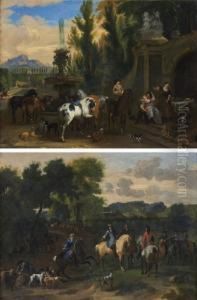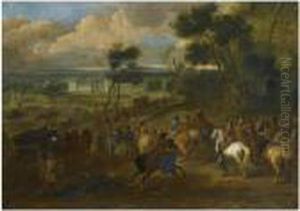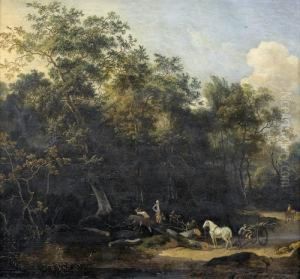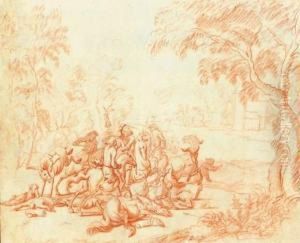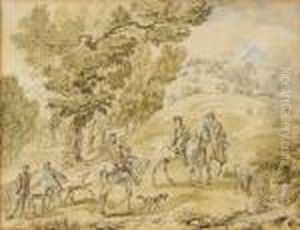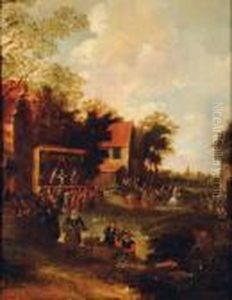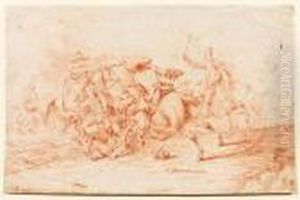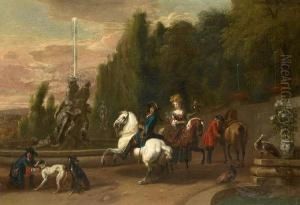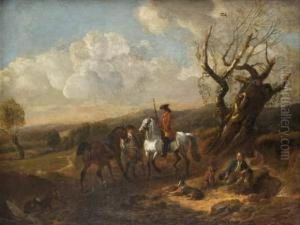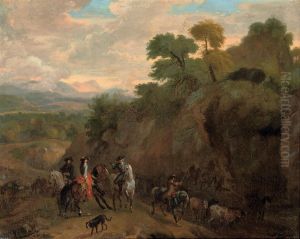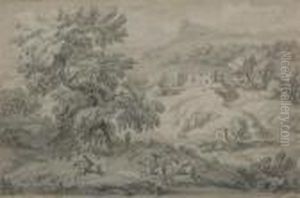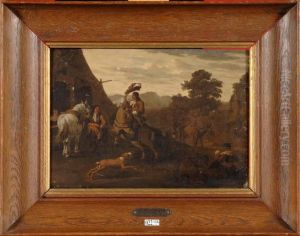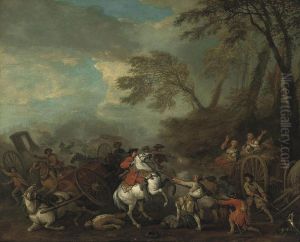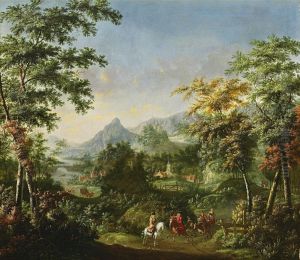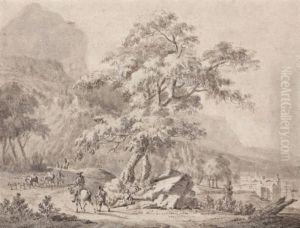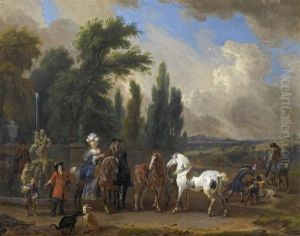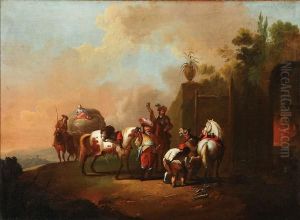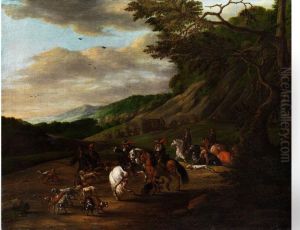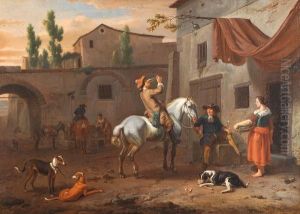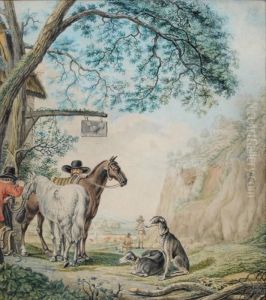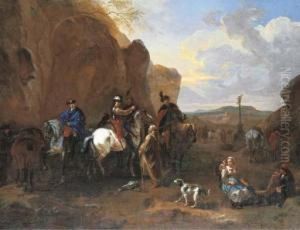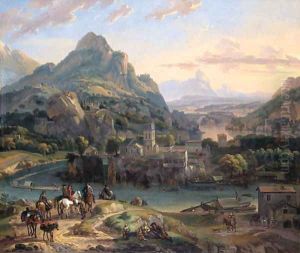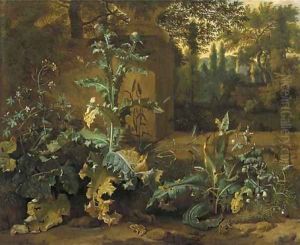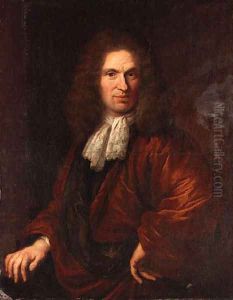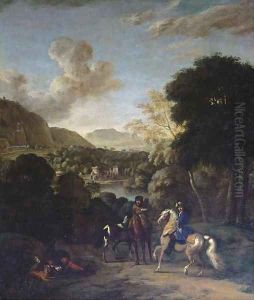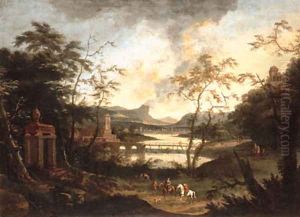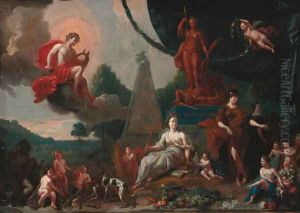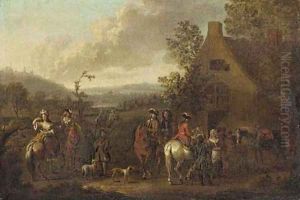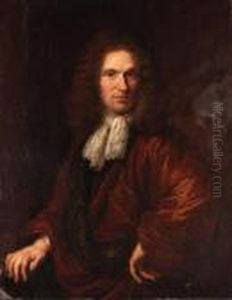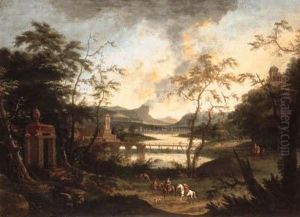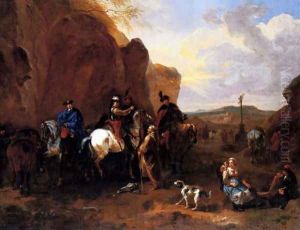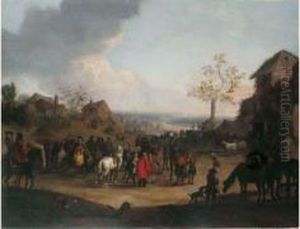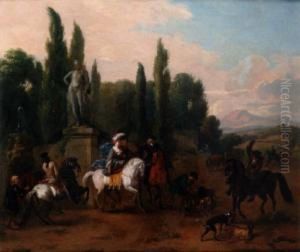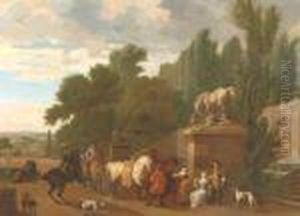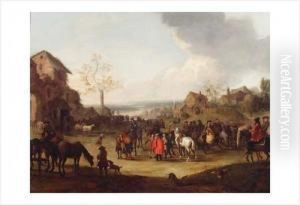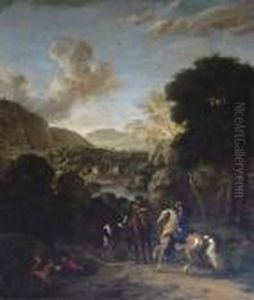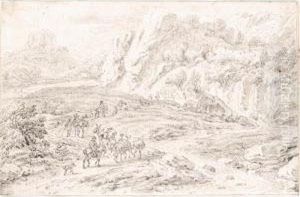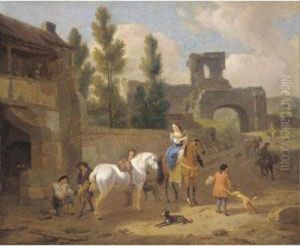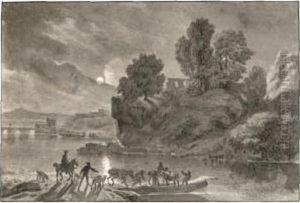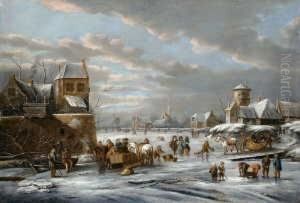Dirck Maas Paintings
Dirck Maas was a Dutch Golden Age painter known for his landscapes, battle scenes, and equestrian paintings. Born in Haarlem in 1659, Maas initially trained under his brother, Nicolaes Maas, who was a pupil of the celebrated landscape painter Jacob van Ruisdael. After his early education in Haarlem, Dirck Maas moved to Amsterdam, where he further developed his artistic skills and was influenced by the works of Philips Wouwerman, a prominent Dutch painter of horses and cavalry scenes.
Throughout his career, Maas focused on depicting various subjects including Italianate landscapes, which were popular at the time, as well as cavalry and hunting scenes. His works were characterized by a fine attention to detail, especially in the rendering of horses and their riders. Maas was adept at capturing the movement and drama of battle scenes, which made his paintings sought after by patrons who appreciated military subjects.
In addition to his work as a painter, Dirck Maas also produced a number of engravings and etchings. His style contributed to the Dutch tradition of genre painting, and he was considered a skilled draftsman and colorist. He worked for several important patrons, including Prince Johan Willem Friso of Nassau-Dietz for whom he created several works.
Maas never married and lived with his sister for most of his life. Despite the popularity of his works during his lifetime, Maas is not as well-remembered today as some of his contemporaries. He died in 1717, leaving behind a body of work that reflects the tastes and interests of the Dutch elite during the late 17th and early 18th centuries. His paintings can still be seen in various museums and collections, offering a glimpse into the art and culture of his time.

